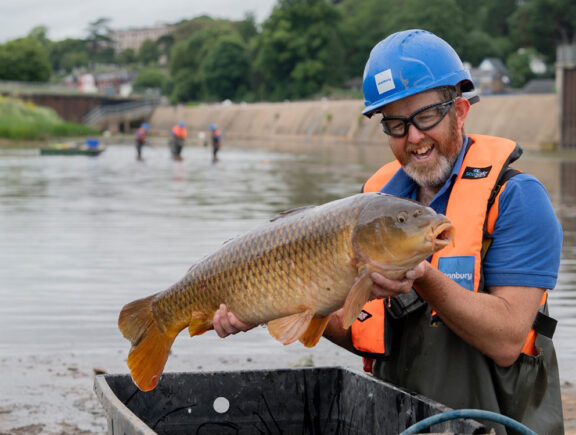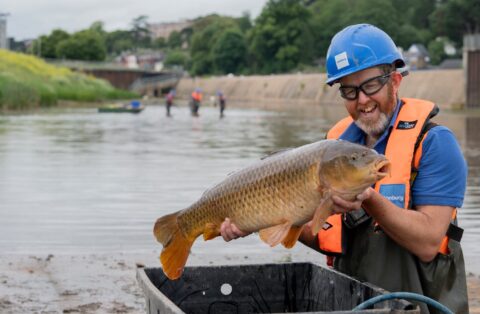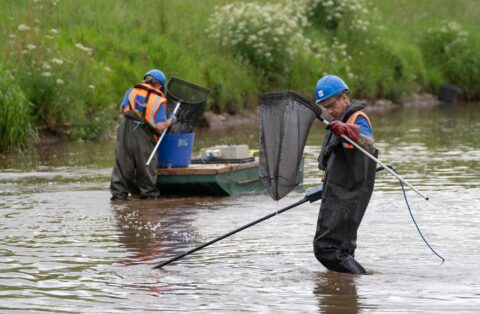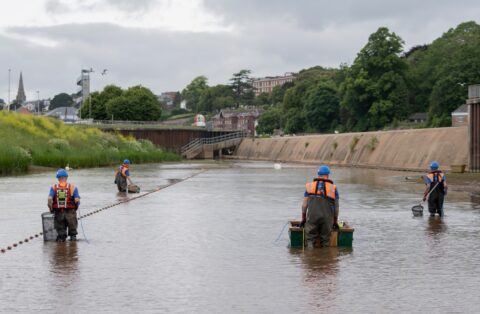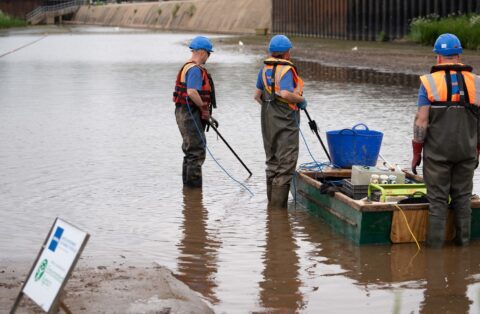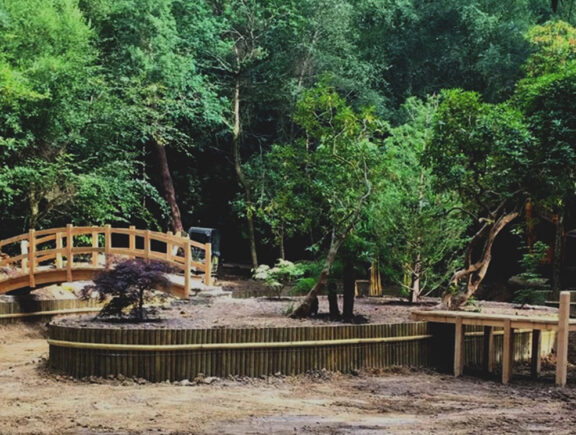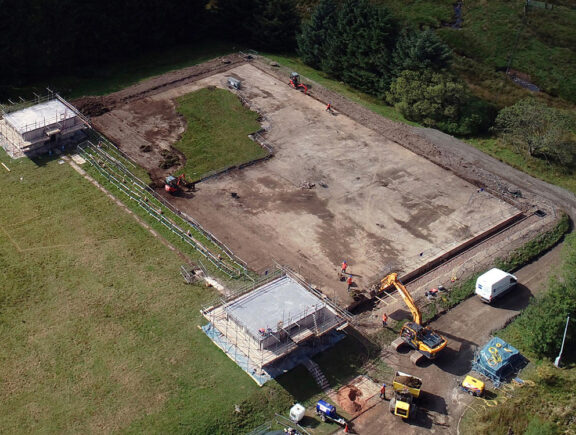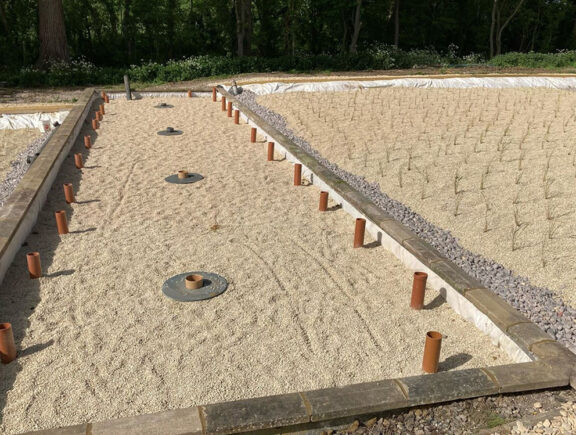To protect biodiversity during necessary desilting, Stonbury was deployed to rescue and relocate fish prior to the area being dewatered. The project was part of the Environment Agency’s Asset Operation, Maintenance and Response (AOMR) framework.
Stonbury’s specialist team used seine nets to segregate the area into smaller portions before capturing fish by electro-fishing. This is a common survey and rescue method that reduces stress on the fish and increases efficacy.
Fish were netted and transferred to an oxygenated holding tank until they were fully recovered, before being relocated into the main river. The process was repeated until fish were no longer surfacing, indicating all fish had been removed as far as reasonably practicable. When dewatering exposed the excess sediment, the team continued to rescue as many protected eels and lampreys as possible.
The team recorded the quantities and species of fish as they were working. The data revealed high numbers of eels and lamprey, as well as a wide variety of other species including pike, flounder, perch, gudgeon, roach, rudd, chub and smaller numbers of carp, brown trout, bream, stone loach, tench, bullhead and stickleback.
Stonbury’s stringent biosecurity protocol was implemented for all equipment and PPE at the end of each shift.
The project safely relocated over several thousand fish back to the main channel of the River Exe below the weir, allowing the programmed work to commence without causing harm to the local ecology.
